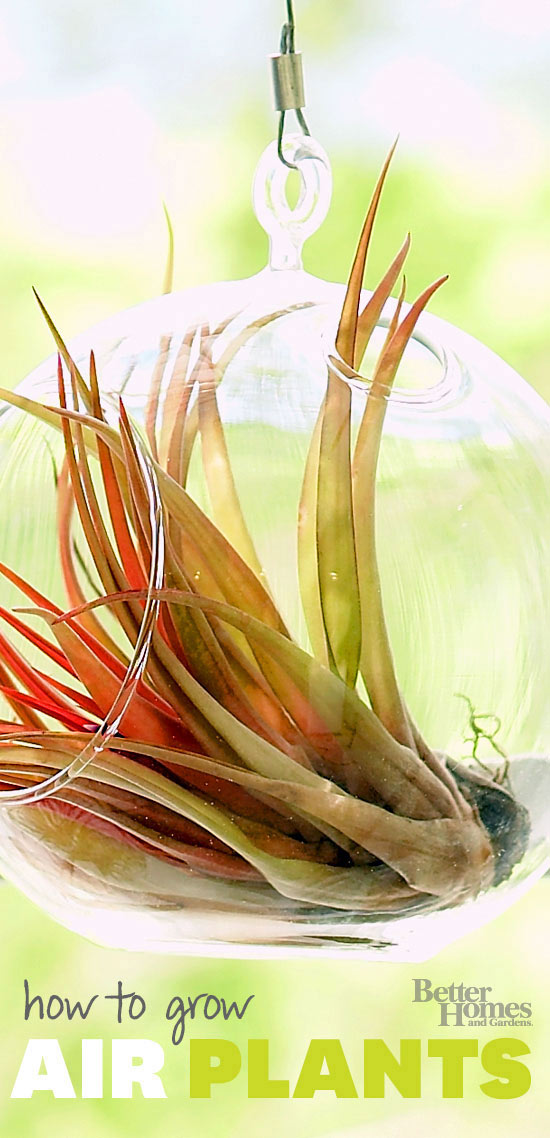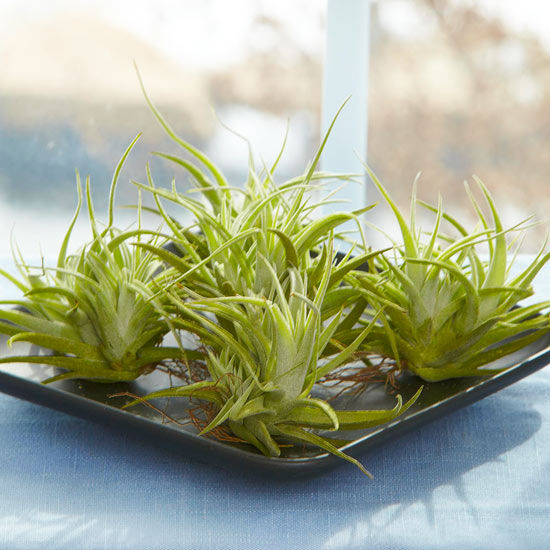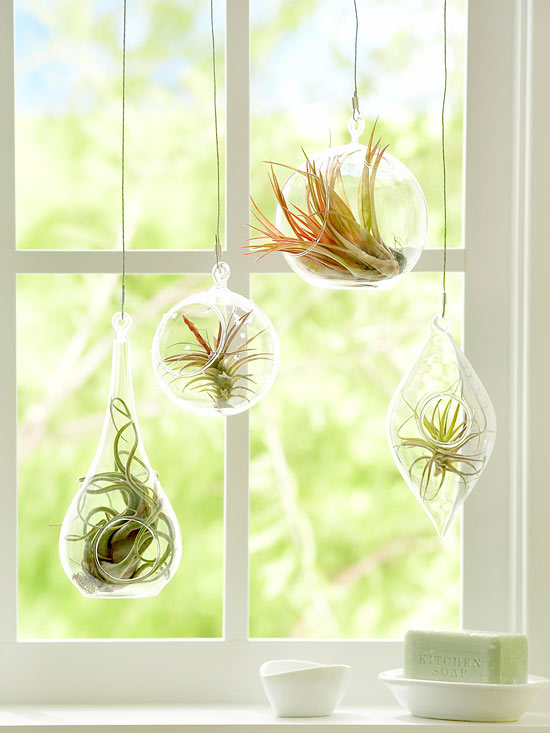






The English pop-rock group The Hollies, who once sang, "All I need is the air that I breathe," could have been referring to air plants. There are more than 650 types of air plants (Tillandsia spp.) that can grow -- and thrive -- without soil.
Why are air plants so easy to grow? These bromeliads get all of the water and nutrients they need through their specialized leaves. Air plants use their roots only for attaching themselves to rocks, trees, shrubs, and the ground. Native to the southern United States, Mexico, Central America, and South America, air plants are warm-weather lovers that can thrive despite neglect.
Many air plants grow with strap-shape or slender triangle-shape leaves, and most have attractive tubular or funnel-shape flowers.
continue reading belowEven though they are easy to care for, there are a few rules to follow when growing air plants:


Air plants look great alone as architectural elements or in an air plants terrarium. Place varieties such as Tillandsia aeranthos 'Amethyst', also called the rosy air plant, into a pot or against a container that will complement or contrast with its pink flower spike.
Play off the spikiness of the foliage by grouping three Tillandsia ionantha and add a tiny toucan, parasol, or other tropical touch.
Air plants that are naturally suited to growing in trees can be lashed against a protected wooden post using translucent fishing monofilament and a bit of sphagnum moss to add extra moisture. Tillandsia species also make fine companions on a planted branch with orchids since they like essentially the same conditions. Hanging air plants are a popular design element.
Get more great ideas for displaying your air plants.
Copyright © www.100flowers.win Botanic Garden All Rights Reserved